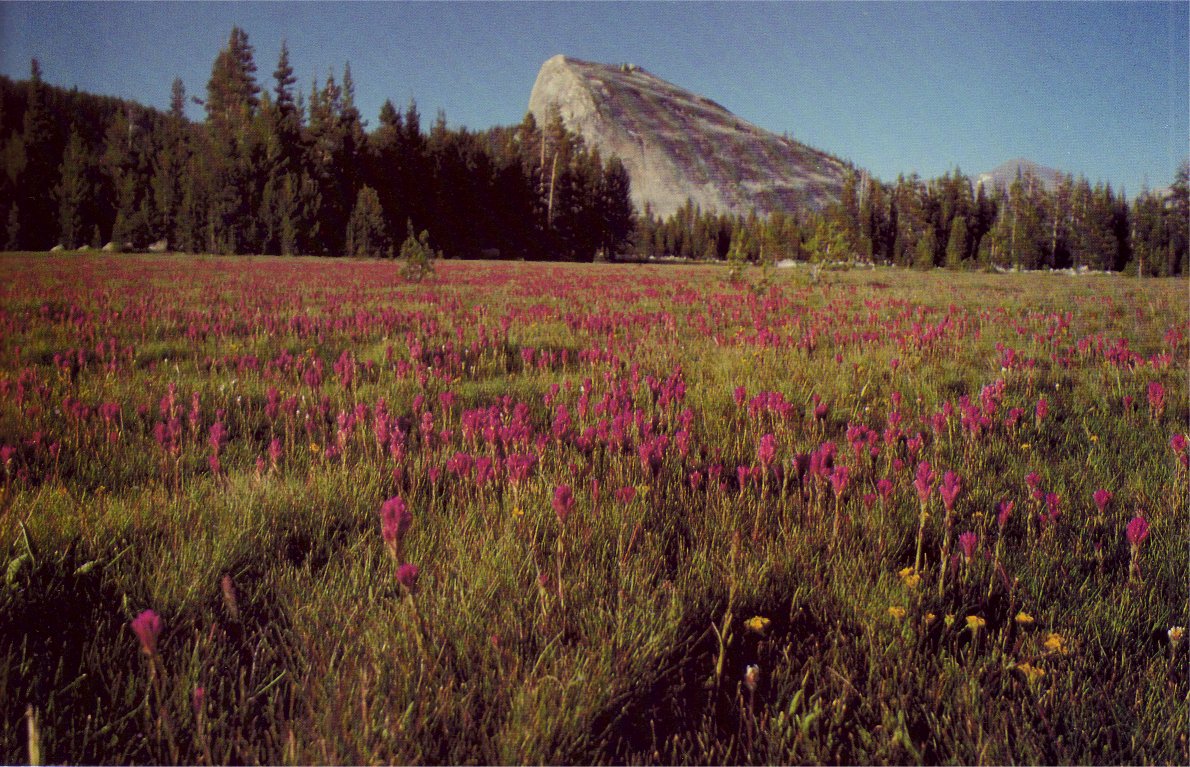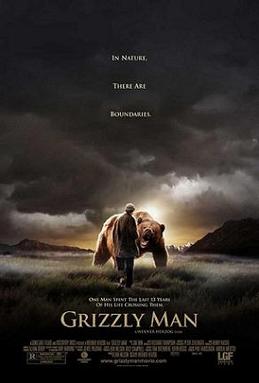At play in the fields of the Lord: John Muir's ecstatic naturalism
I was up in east Scotland on New Year's Day, and found myself walking along a path called the John Muir Way. A few days later, a book I was reading mentioned a famous naturalist called John Muir, so I looked him up. It turns out John Muir was a father of modern conservationism, and the founder of many of California’s national parks. He is also a perfect specimen for my research into ecstatic experiences in nature.
Muir grew up in Dunbar, on the east coast of Scotland, under the baleful shadow of his father Daniel Muir, a hardline Presbyterian. John was forced to memorize the entire New Testament and much of the Old Testament too, and thrashed when he made a mistake. He was constantly warned of his sinfulness and the risk of damnation. If he rebelled, his father would shout ‘the Devil is in him!’ and thrash him again.
When he was eight, his father moved the family to Wisconsin, to join a Presbyterian sect called the Disciples of Christ. The family lived in a hut in a countryside teeming with life. John became more and more interested in the world around him, in poetry, philosophy, engineering, botany and geology, but Daniel Muir said the Bible was the only book he needed, and insisted the boy go straight to bed after his Bible studies at 8pm.
Eventually, Daniel said that if John wanted to study anything other than the Bible, he’d have to wake up early to do it. So John woke himself up at 1am, went down to the basement of the hut, and spent joyous hours constructing ingenious machines out of wood and whatever metal he could find - miniature water mills, clocks, thermometers, milking machines. He then spent three years at the University of Wisconsin-Madison, working in the fields in the summer to pay his way, and becoming famous among the staff and students for his inventions, including a machine to wake him up in which the morning sun burnt through a thread, releasing a spring that hoisted Muir out of bed.
He yearned to go off adventuring, and left university to take a job as a shepherd in the High Sierra near Yosemite Park in California in 1869. He took only a blanket, a compass, the Bible, and the poetry of Milton and Robert Burns. The three months he spent there, following the herd with a St Bernard plodding by his side, sleeping rough and fending off the occasional bear, were among the happiest in his life. They were something like a conversion experience for the 30-year-old - he felt redeemed from the iron cage of his father’s Presbyterianism, and to find himself back in a sinless, God-soaked Eden, where he and every other creature were at ‘endless Godful play’.
He wrote in his journal: ‘I used to envy the father of our race, dwelling as he did in contact with the new-made fields and plants of Eden; but I do so no more, because I have discovered that I also live in "creation's dawn." The morning stars still sing together, and the world, not yet half made, becomes more beautiful every day.’
The journal, which he published near the end of his life as My First Summer in the Sierra, is an ecstatic hymn to Nature:
From garden to garden, ridge to ridge, I drifted, enchanted, now on my knees gazing into the face of a daisy, now climbing again and again among the purple and azure flowers of the hemlocks, now down into the treasures of the snow, or gazing afar over domes and peaks, lakes and woods, and the billowy glaciated fields of the upper Tuolumne.

It’s a Nature-worship reminiscent of passages of Heraclitus or Marcus Aurelius, seeing Nature as a great animated web, resonating with consciousness, joy and love:
Warm, sunny day, thrilling plant and animals and rocks alike, making sap and blood flow fast, and making every particle of the crystal mountains throb and swirl and dance in glad accord like star dust.
The Sierra becomes his church, the stones give sermons, the mountain pines seem ‘definite symbols, divine hieroglyphics written with sunbeams’, and every creature seems to speak..not God’s purpose, but God’s joy.
The cricket is ‘a crisp, electric spark of joy enlivening the massy sublimity of the mountains like the laugh of a child’; the butterflies ‘numbered and known and loved only by the Lord, are waltzing together high over head, seemingly in pure play and hilarious enjoyment of their little sparks of life’; the calypso trees are ‘superior beings who loved me and beckoned me to come. I sat down beside them and wept for joy’; the rocks are ‘dear friends, and have warm blood gushing through their granite flesh; and I love them with a love intensified by a long and close companionship’.
Even the frogs seem to sing God’s song: ‘Some of the smaller species have wonderfully clear, sharp voices, and told us their good Bible names in musical tones...Isaac, Isaac; Yacob, Yacob; Israel, Israel, shouted in sharp, ringing, far-reaching tones.’
He sees a nature brimming with consciousness, and this consciousness manifests as play: ‘Surely all God’s people, however serious or savage, great or small, like to play. Whales and elephants, dancing, humming gnats, and invisibly small mischievous microbes - all are warm with divine radium and must have lots of fun in them.'
So did this ecstatic conversion leave Muir a Christian? Just about, though perhaps more of a pantheist in the Emersonian tradition - sometimes he sees Nature as the outpouring of God’s love, at other times it is Nature itself he seems to worship, in markedly erotic terms - the mountains woo him, the flowers send an electric tingle through his flesh. At such times he seems more of an erotic devotee of Demeter or Astarte than Christ (who he rarely mentions).
He certainly didn’t accept the fundamentalist theory that the Earth was 6,000 years old - he had a much deeper sense of time, and of God’s will shaping the landscape over the aeons (he was the first, I think, to suggest the movement of glaciers had created the mountains and valleys of Yosemite). He had a much slower and more contemplative sense of God’s plan for creation than your typical busy Protestant, ironically given his early genius for inventing clocks. He wrote one morning: ‘Another glorious Sierra day in which one seems to be dissolved and absorbed and sent pushing onward we know not where. Life seems neither long nor short, and we take no more heed to save time or make haste than do the trees or the stars.’
Muir seemed to accept a theory of evolution, but it’s an ecstatic, Heraclitean evolution, in which beings are ‘ever changing, never resting, all are speeding on with love’s enthusiasm, singing with the stars the eternal song of creation’. Rather than Dawkins’ sense of a constant brutal struggle for existence, Muir sees creation as a dance, in which ‘whole kingdoms of creatures enjoyed existence and returned to dust ere man appeared to claim them’. And humans too might be merely one more glint of light in this ever-rippling sea: ‘After human beings have also played their part in Creation’s plan, they too may disappear without any general burning or extraordinary commotion whatever’. In that sense, Muir has moved beyond a Christian anthropocentrism (where man is the summit of creation) to a more radical ecstatic naturalism where all God’s creatures are equally loved. It’s not clear what role Christ’s death and resurrection plays in this creation. Nature, not Christ, is the redeemer.

What about sin? The great critics of Emersonian transcendentalism were his friends, Nathaniel Hawthorne and Herman Melville, both of whom saw the complacency and naivite in the belief that Nature was completely good, and one could become God-like simply by going off alone to commune with the forest. They suggested, as Dostoevsky did, that there is a pride and perversity in the human heart...and even that there is evil in nature too - think of David Lynch’s Twin Peaks, in which the forest is the mysterious site of both good and evil spirits, or of Conrad and Herzog’s vision of nature as amoral, murderous, perverse and indifferent to human suffering.
Muir is too glad to see any evil in himself or nature. He looks on the fierce belligerence of ants and admits that ‘much remains to be done ere the world is brought under the rule of universal peace and love’, but even the excruciating agony of an ant-bite produces a sort of ecstasy in him: ‘A quick electric flame of pain flashes along the outraged nerves, and you discover for the first time how great is the capacity for sensation you are possessed of.’
If he sees evil anywhere, it is in industry, which rapes his beloved creation, and puts a price on every sacred tree and mountain-side. Muir became, at the end of his life, a reluctant prophet for the burgeoning conservation movement, and was a driving force in creating the national parks of Yosemite and Sequioa. He hoped that Americans would be converted from their materialism by visiting these parks and hearing their sermon.
Yet the great spiritual transformation did not take place, and Muir died disappointed, having failed to halt the construction of a dam in his beloved Hetch Hetchy valley. The New York Review of Books writes: ‘Once while traveling with a party of scientists in 1877, he overlooked an alpine vista and began dancing and shouting, "Look at the glory! Look at the glory!" His companions remained coldly reserved and apart. There is no more quintessential image of Muir than that.’
This year is the centenary of Muir’s death, and a chance for British people to get to know him better. Perhaps his ecstatic naturalism even points a way forward, to a new type of worship, steeped in science yet alive to the glory and shimmering joy of consciousness within nature. Why does a whale breach? They breach because consciousness loves to play.


